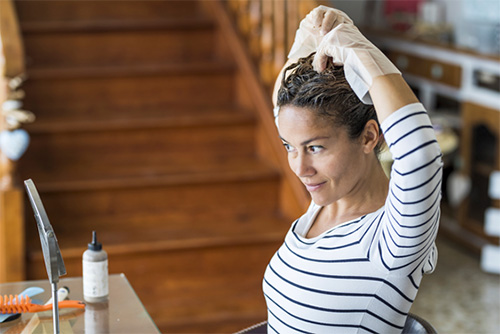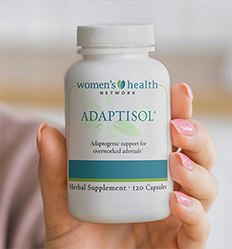You may well remember the famous ad on television about hair color. There’s a woman with beautiful dark hair and her friends are asking each other: “Does she or doesn’t she?” The question of course is — does she use hair dye to cover up her gray hair?

These days, we don’t ask that question very often, because the great majority of women do dye their hair to hide the gray. But, why does hair turn gray anyway? The fact is, hair doesn’t actually “turn” gray. Instead, starting around age 35, hair follicles produce less pigment, or melanin. Each strand of your hair grows for one to three years, then it falls out and you grow a new one. But after 35, when the new ones grow in, they’re more likely to be gray, or have less color.
Genetics can also influence when your new hair starts coming in gray. We’ve all heard friends say that their hair turned gray just the same year their mother’s did. Turns out that’s often true. Still, why does your body produce less melanin as you age — and can you do anything about it?
Recent research points to the hydrogen peroxide — the stuff in dye that lightens hair color — that occurs naturally in your hair follicles. Guess what? Hydrogen peroxide builds up as you get older. Scientists think that’s what blocks the production of melanin.
Setting aside genetics, your chance of “going gray” goes up about 10-20% every decade after you turn 30. This means that by age 50, about 50% of women have 50% gray hair. Caucasians tend to go gray earlier — and redheads earliest of all. Then Asians. Then African-Americans. But scientists haven’t figured out why yet.
And then … there’s premature or rapid graying. Sometimes women develop a lot of gray hair in a short period of time or go gray in their 20s or early 30s. Why does this happen?
Here are a few things that can be involved in the emergence of premature or rapidly graying hair. The good news is that you can actually do something about these!
Nutritional deficiencies: Being deficient in vitamins and minerals like B12, copper and iron can contribute to graying hair. Taking a high quality multivitamin for women can help bridge these nutritional gaps. Not eating enough protein may also be a factor in hair graying, so make sure you are eating approximately 50-60 grams of healthy sources of protein every day.
Chronic stress: When you are under constant stress and your “fight or flight” response is frequently triggered, chemicals released during the stress response — specifically norepinephrine — can deplete the hair’s “reserves” of pigment. The reason why? Norepinephrine can cause pigment producing stem cells to prematurely activate and run out of pigment earlier. Taking steps to reduce your stress can protect you from exposure to stress chemicals.
Smoking: There are lots of reasons to quit smoking, including preserving your natural hair color a little longer. According to multiple studies, smoking is a known risk factor for premature graying hair — and aging skin too!
Certain rare illnesses, vitiligo (a skin pigment disorder) and alopecia areata can also be linked with premature or excessive graying. Some research also links premature graying to heart disease and low bone mass (osteopenia).
So, graying hair is natural … but taking stock of your health now may help you not go gray before your time. It may just help you save on salon visits too.
 | Wonder what your symptoms are telling you? Take our quick Hormonal Imbalance Quiz to find out. |












